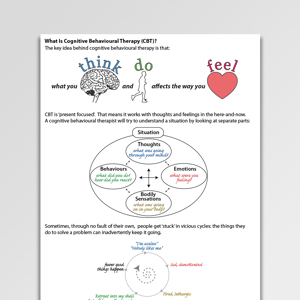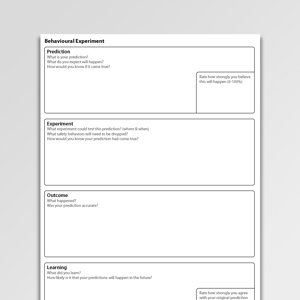What is behavioral activation? Is CBT the best therapy? For many people, altering behavior is sufficient to produce the desired. However, for some people, behavioral activation can be used in conjunction with CBT. Most modern psychological models, in general, include both cognitive and behavioral aspects, exemplified by cognitive -behavioral therapy ( CBT ), perhaps the most common therapeutic treatment today.

Building on Rogers’s foundation of evidence-based care through cognitive behavioral therapy ( CBT ), on February 1 Rogers opens FOCUS, a residential program for young adults with depression and other mood disorders. It is one functional analytic psychotherapy which are based on a Skinnerian psychological model of behavior change, generally referred to as applied behavior analysis. If you or someone you know is struggling with depression, behavioral activation may be the right treatment for you. In addition, behavioral activation can reduce your risk for depression an if you have depression, help treat it. It’s often considered part of cognitive behavioral therapy ( CBT ). However, while CBT is focused on changing your thoughts and then your.
The following tip from the Beck Institute therapists can help make behavioral activation even more effective. There are many different theories on treating depression. The book includes numerous case examples and transcribed segments from therapy sessions and outlines behavioral concepts using. Simple activation : planning and engaging in valued activity.

The next step of behavioral activation is to get active. You know by now that it is important to increase your level of activity even if you don’t feel like it to begin with. With behavioral activation we can kick-start your activity by planning it and sticking to the plan.
We work with patients in group, one-on-one and family therapy sessions. Four treatment strategies were employed in this study including medication-switching alone (to a different SSRI or to venlafaxine) and medication-switching plus cognitive behavioral therapy ( CBT ). Research finds a simple action-oriented approach is effective in treating the common mood disorder. Patients are thus refocused on their goals and valued directions in life.

Behavioral therapeutic components represent a key part of cognitive. The main advantage of behavioural activation over traditional cognitive–behavioural therapy for depression is that it may be easier to train staff in it and it can be used in both in-patient and out-patient settings. The brief behavioral activation treatment for depression is a simple, cost-effective method for treating depression. Used in such situations, behavioral activation can help break the vicious cycle connecting low level of activity to physical deconditioning, which further reduces activity level. Exercise is a specific form of behavioral activation that has shown efficacy for pain management 1and reduction of daytime fatigue.
Recovery can hinge on remembering how to do the things you enjoy. For Coping Skills Please Refer to Coping Skills Page. Cognitive Restructuring.
Of the many existing behavioral interventions , only a few have shown to be effective in fast-paced settings such as primary care. How cognitive behavioral therapy can help treat conditions associated with childhood trauma such as anxiety, depression and faulty thinking styles. However, basic behavioral activation strategies have always been a part of cognitive behavioral therapy for depression. Leanne Quigley, Keith S. Summary and Future Directions.
All therapists recorded the specific therapeutic techniques that they had used for each session on a checklist. Concepts contained in the manual detail the basic steps needed to provide CBT (“PracticingCBT 101”) with the intent that users will feel increasingly comfortable conducting CBT. The manual is not designed for advanced CBT practitioners. Periodic face-to-face sessions between therapist and patient have been the most traditional medium to deliver CBT.
With OCD or anxiety, Storch says CBT involves facing fears in a gradual and systematic way without engaging in safety-seeking behaviors such as avoidance.
No comments:
Post a Comment
Note: Only a member of this blog may post a comment.